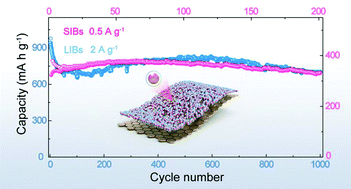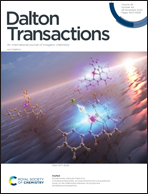In situ chemically encapsulated and controlled SnS2 nanocrystal composites for durable lithium/sodium-ion batteries†
Abstract
SnS2 as the promising anode for lithium-ion batteries (LIBs) and sodium-ion batteries (SIBs) still encounters the undesirable rate performance and cycle stability. Herein, a unique stable structure is developed, where the SnS2 nanocrystals (NCs) are sturdily encapsulated by carbon shells anchored on a reduced graphene oxide (rGO) via the one-pot solvothermal process. The well-controlled carbon shells provide the enduring protection for SnS2 NCs through C–S covalent bonds from the corrosion of electrolyte and pulverization of structure. Moreover, both experimental results and density functional theory (DFT) calculations demonstrate that the carbon protective shell effectively enhances the structure stability and conductivity of the resulting materials. Interestingly, the size of SnS2 NCs and the thickness of carbon shells are accurately controlled by regulating the content of glucose. Aided by the advanced electron/ion transfer kinetics and structure stability, the SnS2-based electrode exhibits desired lithium/sodium storage performance and unprecedented long-term cycling stability (capacity retention of 74.7% after 1000 cycles at 2 A g−1 for LIBs and 102% after 200 cycles at 500 mA g−1 for SIBs). This work develops a method for promoting the practical applications and large-scale production of SnS2 composites for energy storage devices.



 Please wait while we load your content...
Please wait while we load your content...